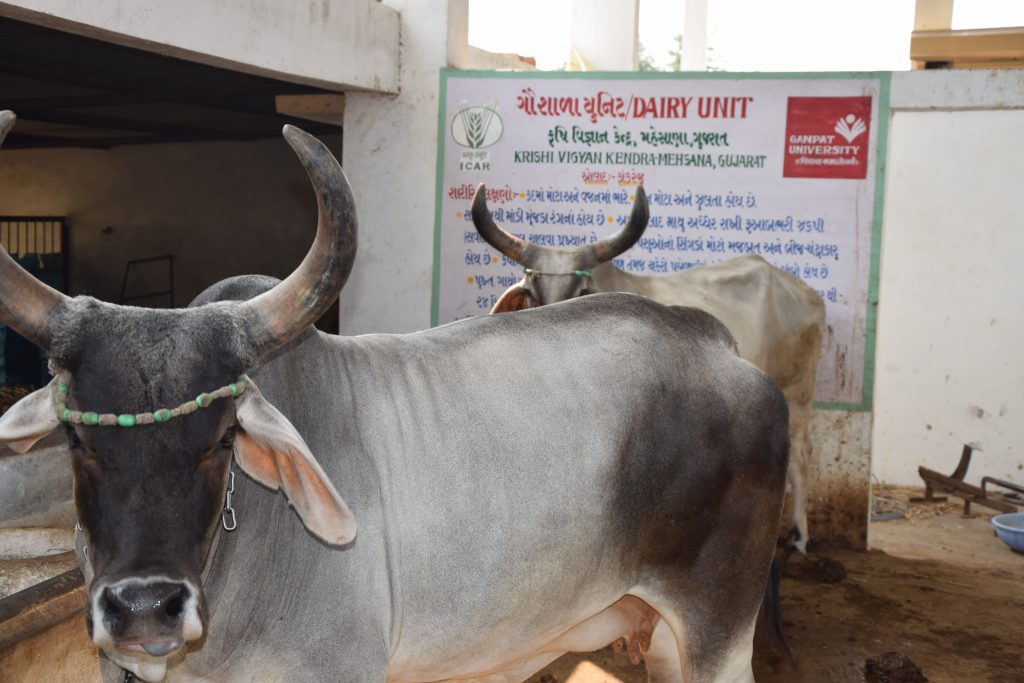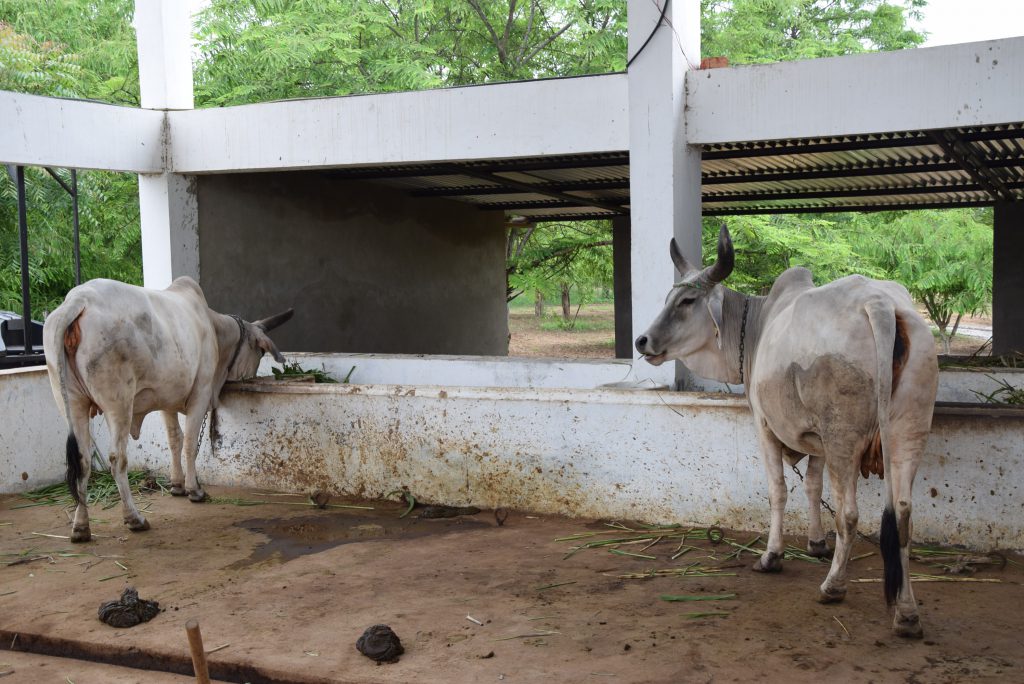Gaushala unit
Krishi Vigyan Kendra, Mehsana has well established Gaushala unit. A kankrej cow gaushala unit has been constructed in scientific manner in which there are currently four kankrej cows in gaushala unit. The Gaushala unit at Krishi Vigyan Kendra is scientifically constructed, with automatic watering system for cows and manger is also made using scientific methods. Gaushala unit having electrical chaff cutter. The cows of the farm are given green and dry fodder daily by cutting them with a chaff cutter. Cow dung urine is used in different units of KVK like Jivamrut unit, vermi compost unit and instruction farm of KVK.
Characteristics of Kankrej Cow
Kankrej cattle are also known as “Wadad” or “Waged”, “Vagadia”, “Talabda”, “Nagar”, “Bonnai”. It takes its name from the name of geographical area i.e. Kankrej taluka of Banaskantha district in Gujarat. They are found in the area southeast of Rann of Kutch comprising Mehsana, Kutchchh, Ahmedabad, Kheda, Anand, Sabarakantha and Banaskantha districts of Gujarat and Barmer and Jodhpur districts of Rajasthan. Kankrej, famously known as Guzerat in Brazil, is being maintained in large numbers as a pure breed in that country. The Guzerat was the most important breed in the formation of American Brahman. The unique characteristics like resistant to tick fever, heat stress, very little incidence of contagious abortion and tuberculosis made Kankrej a very popular one among these countries. Coat colour of the animal varies from silver grey to iron grey and steel black. In males, forequarters, hindquarters, and hump are slightly darker than the rest of the body. Bulls tend to get darker than cows and bullocks. The hump in the males is well developed and not as firm as in other breeds. Forehead is broad and slightly dished in the centre. Face is short and nose slightly upturned. Unique characteristic of this breed is its large, pendulous ears. The horns are lyre shaped. The cows are good milkers and bullocks are used for agricultural operations and road transport. The cows yield on an average 1738 kilo grams and a maximum of 1800 Kg of milk in a lactation. Selected cows have produced around 4900 Kg at village conditions.


![]()